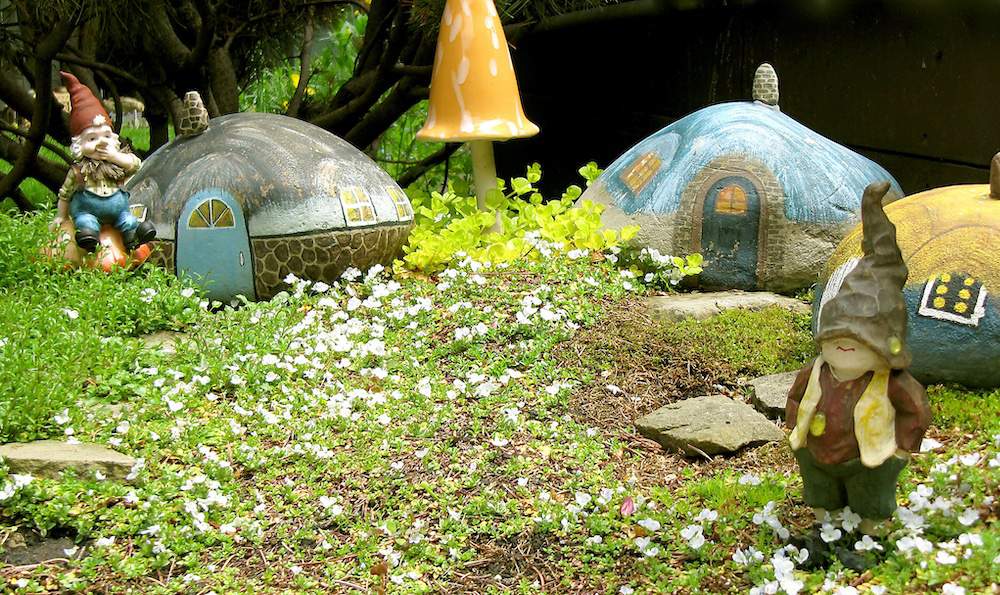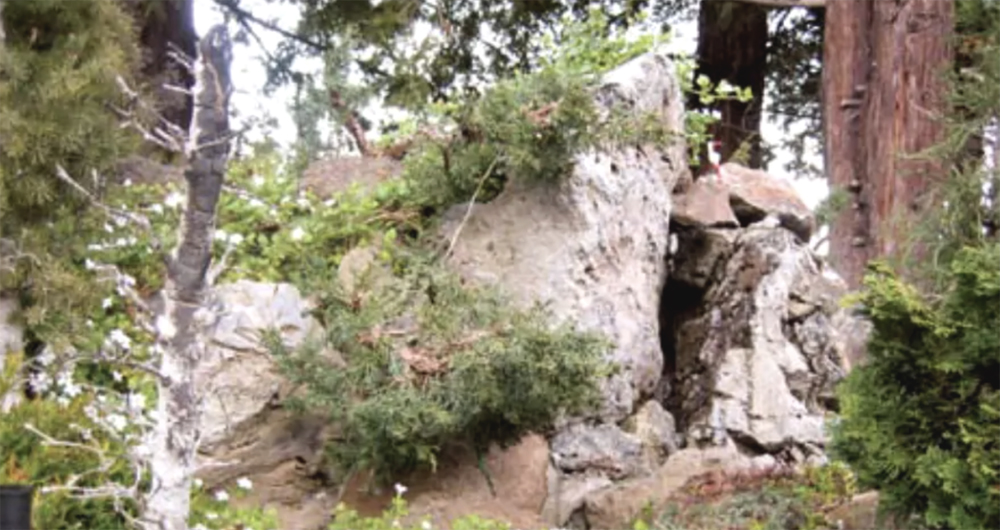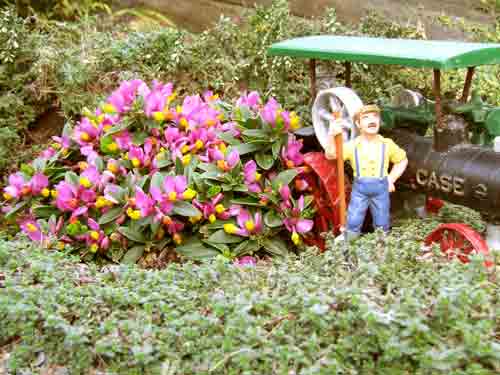Polka dot plant introduction
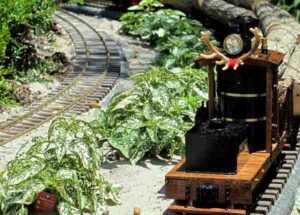
Common name: Polka-dot plant, Freckle face
Latin name: Hypoestes phyllostachya
Plant type: Annual
USDA Hardiness Zones: 10-11
Cultural needs: Moist, well drained, slightly acidic soil; sun to part shade
Plant size: 12-18″ (species), 6″ (hybrids)
Who gets to decide how large a leaf is okay for a garden railway? The gardeners do. Across the country, railroad gardeners like the cheerful polka-dot plant for its characteristic pink-and-silvery foliage. Two-inch leaves appear smaller because of the freckles. Traditionally, polka-dot plants have been good terrarium candidates; remember this, because thin leaves love humidity, which can be increased by planting hypoestes in groups and near water features.
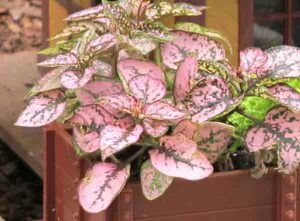
Above, white polka-dot plants line the tracks like a low hedge. The close up shows 2″-potted plants sunk into a gondola on open-house day. Like many so-called annuals, these imports grow as perennials in their native South Africa. If you grow them to a leggy stage, the bushy plants appreciate pinching back hard to keep them full and low. Take cuttings for new plants or plant seeds. Most nurseries (in their “annuals” section) offer polka-dot plants whose spots are tiny or large, in magenta, white, or pink. The hybrid, H.p. ‘Confetti Compact Mix’, is the best choice for small-scale shrubs in an array of color. Some are sold in tiny pots suitable for flanking your depot’s scale door.






